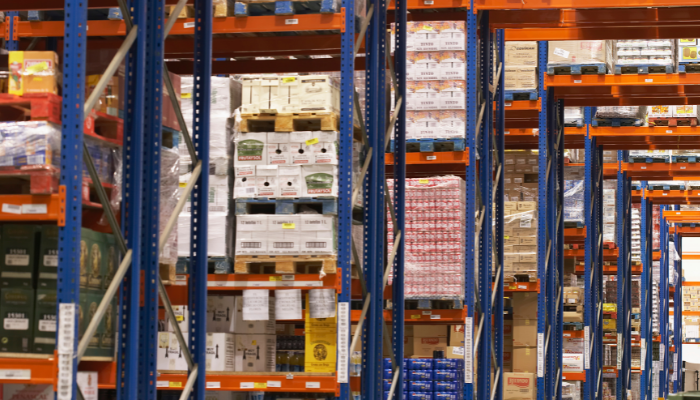First in, first out (FIFO) warehousing is a simple concept and when it comes to food distribution, it is the most effective inventory management method. FIFO is as simple as it sounds – the first items that come into your warehouse are the first to leave. There are many benefits from using FIFO, including minimising waste and distributing products before reaching expiration. Let’s delve deeper into some of the key benefits of the FIFO method and how it can improve your business.
Minimises waste
In food manufacturing and distribution, stock is a company’s livelihood. A company that follows the FIFO method should always be moving the oldest stock first. Clients want the freshest produce, so using the FIFO method lowers the chances of food spoilage or items reaching their best before date before leaving the warehouse door. This minimises food waste, which can also include returned or incomplete orders. In addition, storing older stock in front of new stock means less double handling, which minimises stock being damaged from unnecessary movements.
Streamlines Processes
The FIFO method doubles the effectiveness and efficiency of first in first out warehousing when a business also calculates its optimal inventory levels. This is a popular inventory management model often coupled with FIFO. This inventory control model indicates the optimal amount of stock where the total cost of the inventory will be at the minimum. This is also known as economic order quantity (EOQ). The EOQ model serves businesses by protecting them from running out of stock while also minimising the amount of capital tied up in managing excess inventory.
Optimising Warehouse Space
The FIFO method also improves workflow and high traffic zones by limiting material handling and minimising the overall usage of warehouse space. Pallet flow rack systems mean goods can be stored in a more compact way, freeing up more floor space.
In addition, maximising your warehouse space may also be an opportunity to reassess your warehouse configuration and pallet racking system. Pallet flow racking systems are designed for FIFO inventory management, allowing employees to feed goods in one end of a rack bay and retrieve the stock from the opposite side when processing an order.
A track or roller system along the rails of the rack tilts downwards, moving packages from the loading side to the unloading side.
Furthermore, introducing clear labelling on pallet racking aisles and bays ensures operators can easily identify the older items when there are multiple product choices in the same location. And in the same vein, implementing barcode labelling linked to an enterprise resource planning (ERP) system will enhance your business tenfold, by tracking stock movements in real time.
Better financial tracking
The bottom line for any business is tracking the company’s financial records. The FIFO method gives a very accurate picture of a company’s financial situation, which helps a company plan for its future. In addition to organising your warehouse, FIFO can be intergrated into your enterprise resource planning (ERP) system, such as MYOB Advanced. FIFO is one of the most accurate ways to calculate the amount of inventory available.
How can Acacia help?
At Acacia, we are an MYOB Advanced Platinum Partner and industry leaders in helping food manufacturers and distributors overcome issues, rebound and become more profitable. We help optimise, automate and improve the traceability of your business. With Acacia you know your business is working with the best in the industry. Acacia has the knowledge and experience across a range of businesses to provide the most cost-effective solution for your business.
If you are interested in finding out how Acacia can help your business, please contact us to find out more.


